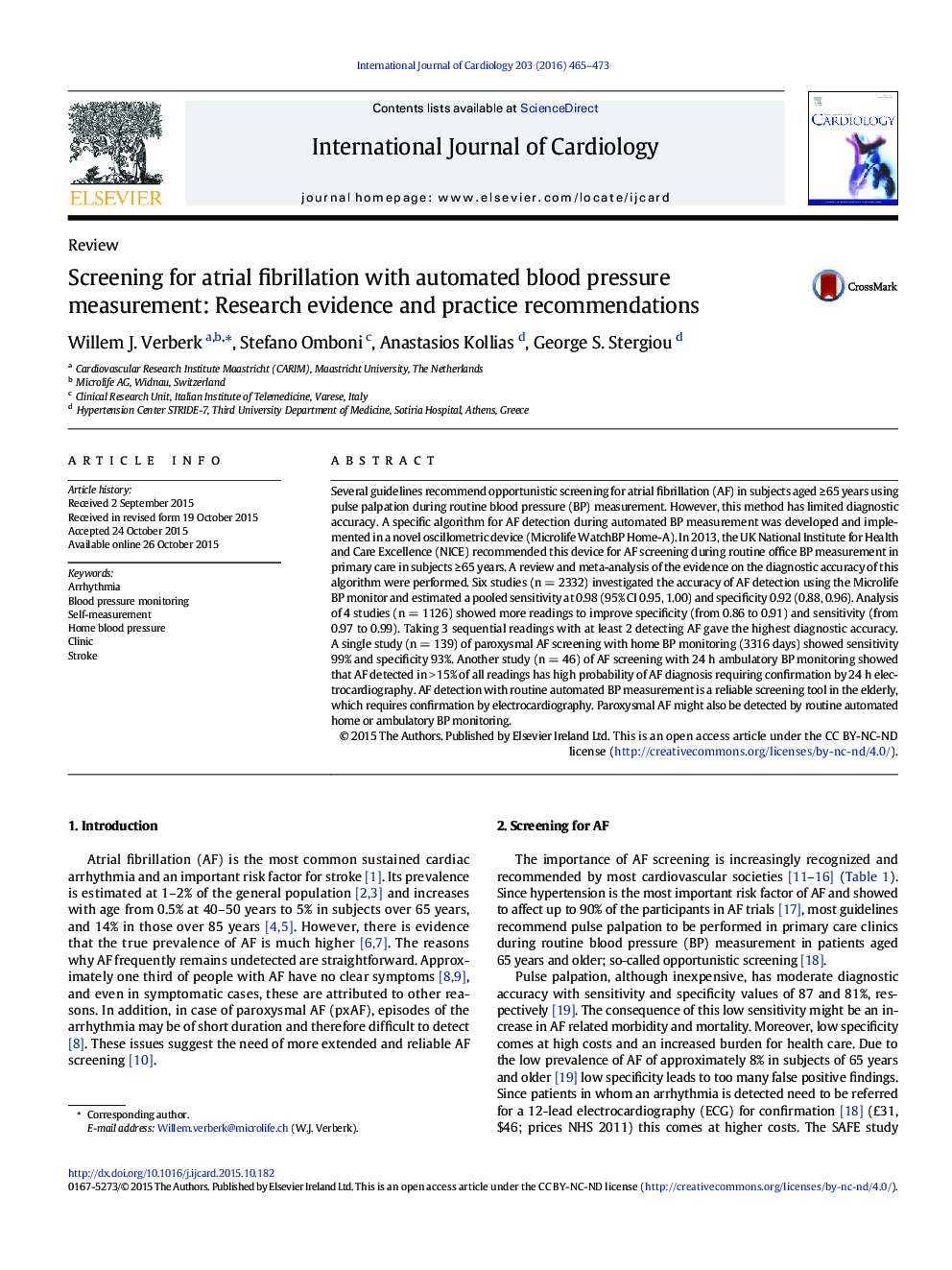| Article ID | Journal | Published Year | Pages | File Type |
|---|---|---|---|---|
| 5965538 | International Journal of Cardiology | 2016 | 9 Pages |
â¢National Institute for Health and Care Excellence recommends Microlife WatchBP for atrial fibrillation screening during blood pressure measurementâ¢Meta-analysis showed a sensitivity of 0.98 (95% CI 0.95, 1.00) and specificity 0.92 (0.88, 0.96) for detecting atrial fibrillation with this monitorâ¢Interpretation of blood pressure measurement during atrial fibrillationâ¢Recommendations for screening of atrial fibrillation from scientific societiesâ¢Recommendations for atrial fibrillation detection with automated blood pressure measurement.
Several guidelines recommend opportunistic screening for atrial fibrillation (AF) in subjects aged â¥Â 65 years using pulse palpation during routine blood pressure (BP) measurement. However, this method has limited diagnostic accuracy. A specific algorithm for AF detection during automated BP measurement was developed and implemented in a novel oscillometric device (Microlife WatchBP Home-A). In 2013, the UK National Institute for Health and Care Excellence (NICE) recommended this device for AF screening during routine office BP measurement in primary care in subjects â¥Â 65 years. A review and meta-analysis of the evidence on the diagnostic accuracy of this algorithm were performed. Six studies (n = 2332) investigated the accuracy of AF detection using the Microlife BP monitor and estimated a pooled sensitivity at 0.98 (95% CI 0.95, 1.00) and specificity 0.92 (0.88, 0.96). Analysis of 4 studies (n = 1126) showed more readings to improve specificity (from 0.86 to 0.91) and sensitivity (from 0.97 to 0.99). Taking 3 sequential readings with at least 2 detecting AF gave the highest diagnostic accuracy. A single study (n = 139) of paroxysmal AF screening with home BP monitoring (3316 days) showed sensitivity 99% and specificity 93%. Another study (n = 46) of AF screening with 24 h ambulatory BP monitoring showed that AF detected in > 15% of all readings has high probability of AF diagnosis requiring confirmation by 24 h electrocardiography. AF detection with routine automated BP measurement is a reliable screening tool in the elderly, which requires confirmation by electrocardiography. Paroxysmal AF might also be detected by routine automated home or ambulatory BP monitoring.
